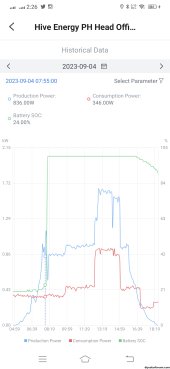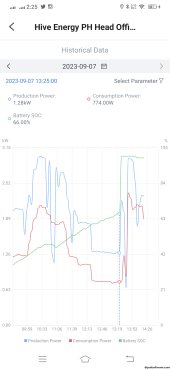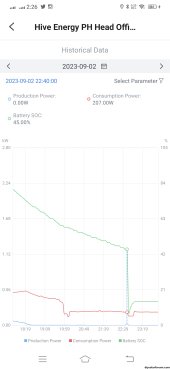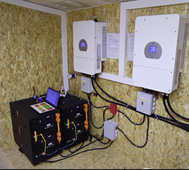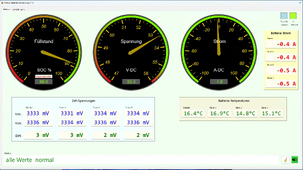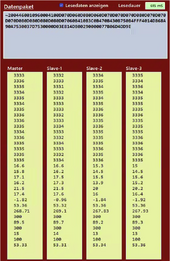Dorokun192
New Member
- Joined
- Dec 6, 2020
- Messages
- 4
I would like to ask those who are currently using seplos bms v2 16S 200A. I bought mine locally here in the Philippines and this is my 2nd time that I've installed this BMS. The issue is that there are instances where the SoC of the battery pack jumps from 22% all the way up to 99% in a matter of seconds as well as during discharge it would jump from 45% to 7%. I checked the voltage of each cell and they are all equal up to 3.21xV. I also tried to calibrate the SoC via full charge and discharge but I can't seem to do it due to this issue. I've attached some screenshots from my Deye app showing the SoC of the battery (green) in reference to the power generation (blue) as well as consumption (red). How do I resolve this issue?
